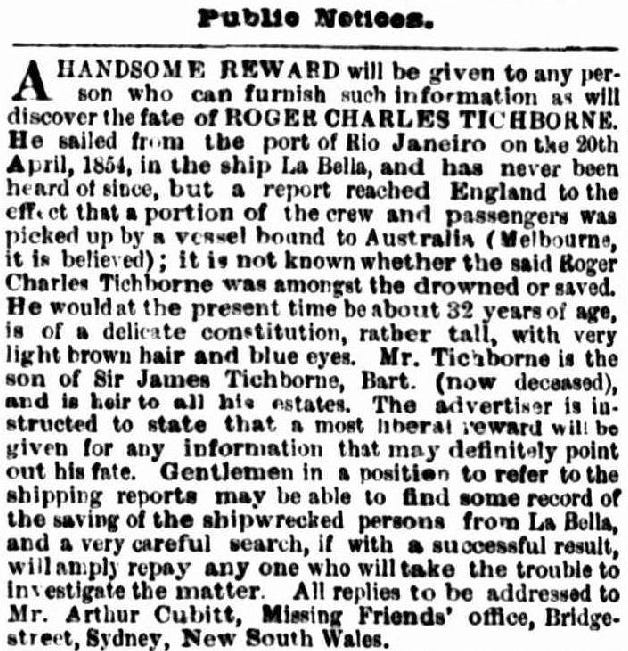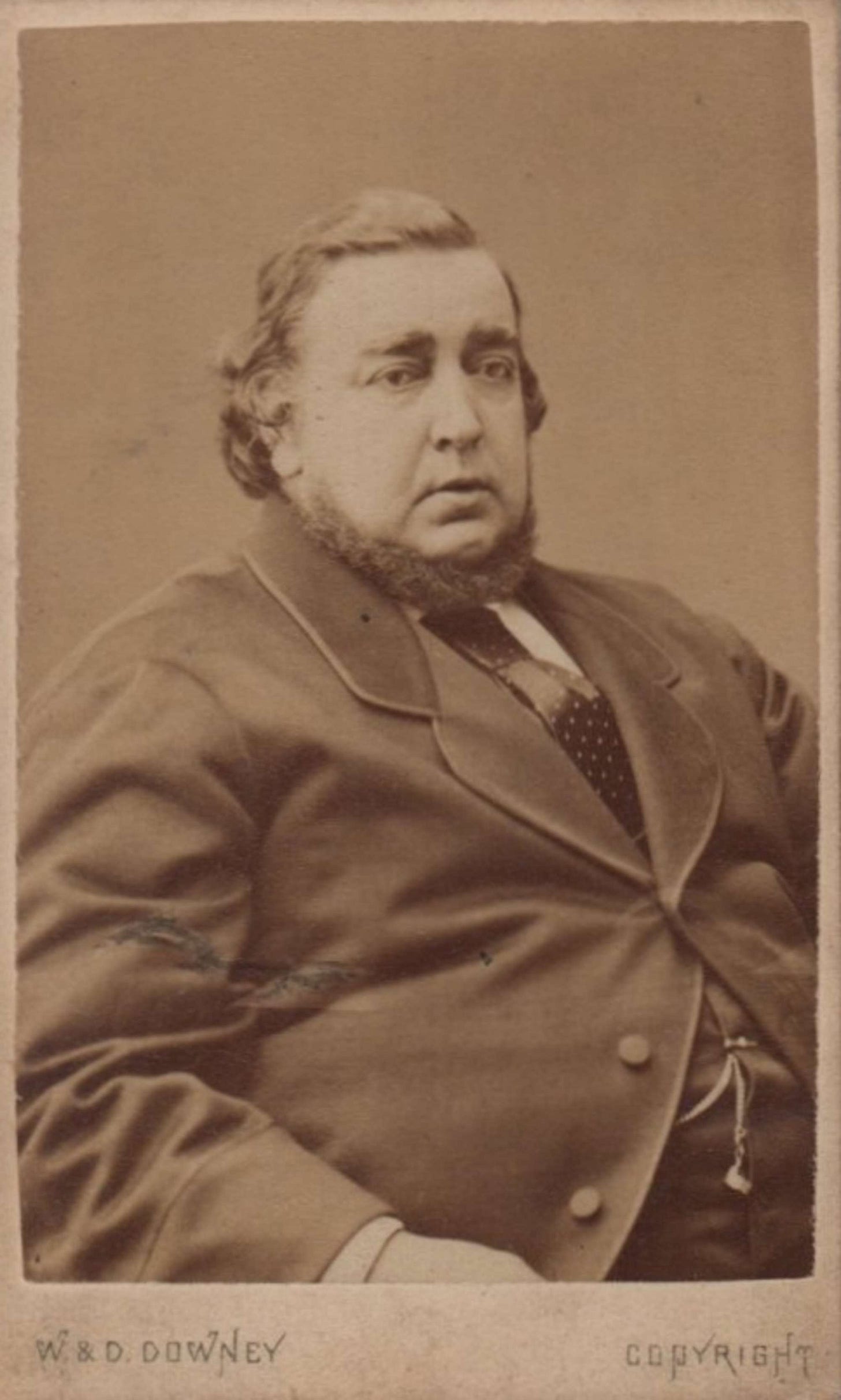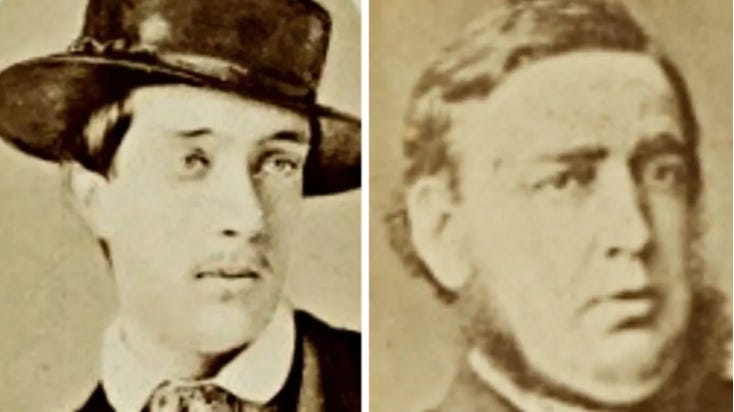⌾Curio #19 - Roger Tichborne, English Pubs & The Spy From Cairo
Welcome to 2019’s final installment of Curio, the newsletter for curious minds seeking an escape from the noise of the news cycle. I’ll be taking a couple of weeks off for the Christmas/New Year break, but look forward to continuing Curio in 2020. Thanks so much for reading, it means a lot :)
If you’d like to spread the good word, then forward this to family and friends and they can sign up below
See you next year,
Oli
Roger Tichborne & The Trial of the Century
Describing circumstances as stranger than fiction is a tired cliché, but sometimes it is completely justified. The story of Roger Tichborne, which captivated Victorian Britain in the 1860s and 1870s, is one such example.
Tichborne was born in 1829 into an aristocratic English family and raised in Paris. At the age of twenty-five, he took leave from the army and embarked on a ten month trip around South America. After traveling throughout the continent, he boarded a ship called La Bella in Rio De Janeiro bound for Jamaica. Four days later, the wreckage of La Bella was discovered off the Brazilian coast but no people were found. Back in England, the Tichborne’s were told Roger was missing and presumed dead. They were devastated.

Roger Tichborne as a young man
A few years later, Roger’s father died, meaning that Roger would have become the eleventh Baronet of Tichborne and inherited the family estate. After hearing rumors that another ship had picked up the survivors and taken them to Australia, Roger’s mother, Lady Tichborne, contacted a fortune-teller who assured her that Roger was still alive. Encouraged by this, Lady Tichborne took out advertisements in British and Australian newspapers, offering “a handsome reward” for information leading to the whereabouts of her son. The below is a notice in the Sydney Morning Herald from August 2nd, 1865.

Lady Tichborne placed advertisements in major newspapers throughout the UK and Australia
Found At Last?
In 1865, ten years after Roger’s disappearance, an Australian lawyer contacted Lady Tichborne to say that he may have found her son. During a bankruptcy deposition, a butcher from Wagga Wagga in rural New South Wales by the name of Thomas Castro revealed that he had survived a shipwreck and owned property in England. He also smoked a pipe engraved with RCT — Roger’s initials. The lawyer in the deposition, who had seen the newspaper advertisements, pressed Castro, who eventually admitted he was indeed Roger Tichborne. He claimed to have been rescued off the coast of Brazil by a ship, The Osprey, that headed to Melbourne. After arriving in Australia, he settled down in Wagga Wagga to work as a butcher.
Castro/Tichborne, known as “the claimant”, started communicating with Lady Tichborne and made plans to return to England. While he was in Sydney preparing for the move, he happened to run into two former Tichborne family servants who knew Roger well growing up. One of the former servants believed that the man was Roger, but the other wasn’t so sure. A complicating factor was that, before his disappearance, Roger was a thin man with a ‘delicate constitution’, whereas the man now claiming to be Roger was enormously overweight.

The man claiming to be Roger Tichborne: Thomas Castro, a butcher living in Wagga Wagga, New South Wales
People For The Claimant
Upon his much-anticipated arrival in the UK, the claimant met with Lady Tichborne who immediately declared that he was her long lost son. She granted him a large monthly allowance from the family estate. There were other notable advocates for the claimant.
The Tichborne’s lawyer also believed him, impressed at small details that the claimant remembered from Roger Tichborne’s childhood, including the fly fishing tackle he liked to use, the specific clothing he used to wear and the name of the family dog
The family doctor also claimed he recognized a physical resemblance to the young man he once knew
People Against The Claimant
The rest of the Tichborne circle of family and friends were deeply skeptical of the claimant. They pointed out the following problems:
The claimant’s written correspondence with Lady Tichborne before his arrival back in the UK was full of poor grammar and incorrect spelling, though Roger was very well educated
The claimant couldn’t speak French, despite Roger having grown up in Paris and being fluent in the language before he left for South America
He didn’t recognize the handwriting of his father or remember any details of the boarding school he attended
Before Roger left for South America, he left a package with a family servant, but the claimant couldn’t say what was in the package
The claimant’s excuse for these shortcomings was that the trauma of the shipwreck impacted his memory. This convinced Lady Tichborne, who believed the man was her beloved son until the day she died in 1868.

The same man? Opinion was divided
Civil Trial
In 1871, the claimant was the subject of a civil trial that required him to prove that he was Roger Tichborne and ought to be entitled to the family estate.

The trial generated huge public interest
During the trial, a man who was close friends with Roger at high school testified that Roger had a couple of distinctive tattoos on his body which the claimant didn’t have.
Investigators had also found a number of people in Australia who identified the claimant as a man called Arthur Orton, the son of a butcher from London who started a new life in Australia and changed his name to Thomas Castro. They argued that the claimant must have seen Lady Tichborne’s advertisements in the newspapers and saw an opportunity to deceive the family and inherit the Tichborne family estate. They explained his ability to remember particular details from Roger’s childhood as a result of his chance meeting with the Tichborne family servants in Sydney, arguing he must have bribed them for particular details of Roger’s life.
The judge in the civil trial decided against the claimant and ordered that he be arrested on charges of perjury.
Criminal Trial
The following criminal trial to determine whether the claimant was guilty of perjury was, up until then, the longest trial in the history of the English courts. It lasted one hundred and eighty-eight days and gripped the public.

Everyone had an opinion about whether the claimant was an imposter or telling the truth
Some of the evidence given against the claimant included the following:
A handwriting expert said the claimant’s writing matched Orton’s, not Tichborne’s
The ship that he claimed to have been picked up by off the Brazilian coast, The Osprey, didn’t mention in its logs having picked up any shipwreck survivors
Nor could the claimant name the captain or any of the crew of The Osprey
The court ruled that the claimant was guilty of perjury and was, in fact, Arthur Orton. He was sent to prison for ten years, where he continued to maintain that he was Roger Tichborne.

Guilty of perjury, the claimant spent ten years in prison
Life After Prison
After ten years in prison, the claimant found that the British public had largely lost interest in him. He moved to New York and worked as a bartender for a year before returning to England and starting a number of failed businesses. He died in 1898, destitute and forgotten.
However, the news of his death caused a stir and around five thousand people attended the funeral. In a final twist to the tale, the Tichborne family allowed his death certificate, the cemetery’s records and the coffin to label him Sir Roger Tichborne.
How To Behave In English Pubs
In 1943, the US Office of War Information (OWI) created a film that they showed to all American troops who were to be stationed in the UK during the Second World War. It was called How to Behave in Britain and featured the acclaimed Hollywood actor, Burgess Meredith, who had previously starred in Of Mice and Men (1939). In 1942, Meredith enlisted in the army and was transferred to the OWI where he made training and education films for America's forces. After the war, Meredith would appear in The Twilight Zone, play The Penguin in the 1960s TV series, Batman, and be Rocky Balboa’s boxing trainer, Mickey, in the Rocky film series.
This clip aims to show American troops how to behave appropriately in English pubs. I love how this lighthearted peek into the past captures the difference between British and American sensibilities.
The Spy From Cairo
Moreno Visini (aka The Spy From Cairo) is an Italian producer and multi-instrumentalist who plays the oud, bağlama, çifteli, sitar, bass and guitar. As a teenager, he moved to the UK and spent a lot of his time with the Arabic, Indian and West Indian communities of Ladbroke Grove in West London and became heavily influenced by their musical styles. After stints returning to Italy, spending a year in Spain (where he learned to play flamenco style classical guitar) and back to London, he relocated to the US and has been based in Brooklyn for over twenty years.
As a student of Arabic, Egyptian and Syrian classical music, Visini combines Arabic and Middle Eastern melodies with reggae beats that coalesce to create his unique sound. When I listen to tracks like Nafas, I picture Bob Marley riding a camel in the desert.
If you enjoyed this edition of Curio, then send it to a friend as a Christmas 🎅🎄 or Hanukkah 🕎 present. It’s the gift that keeps on giving!
Curio is a newsletter for curious minds looking to escape the noise of the news cycle. It is put together by Oli Duchesne



